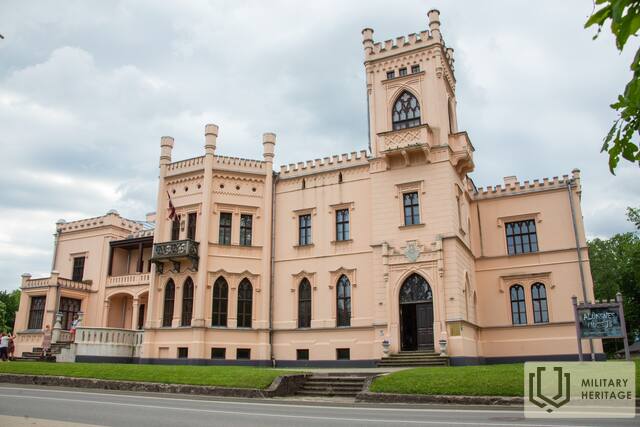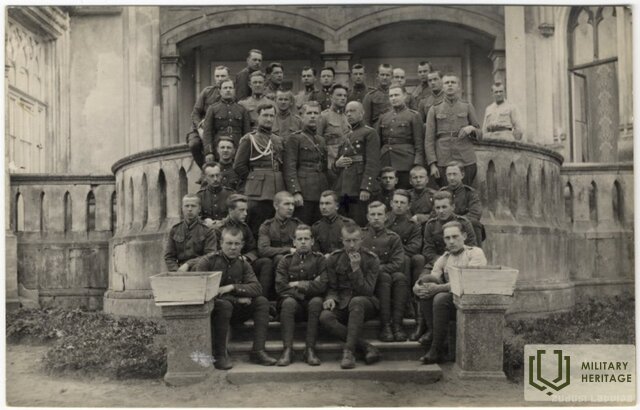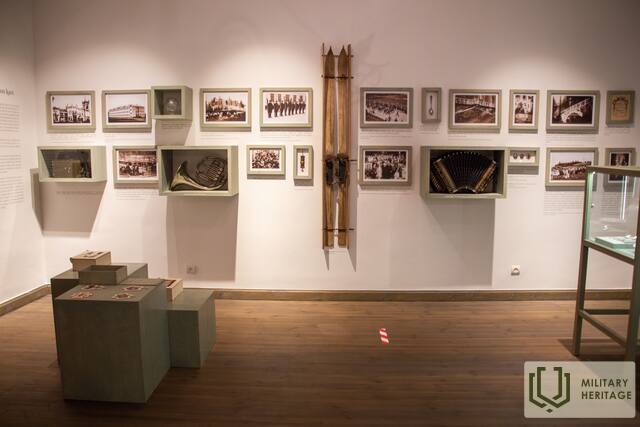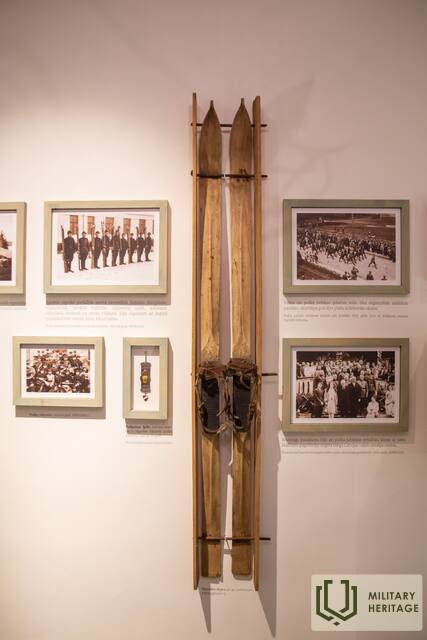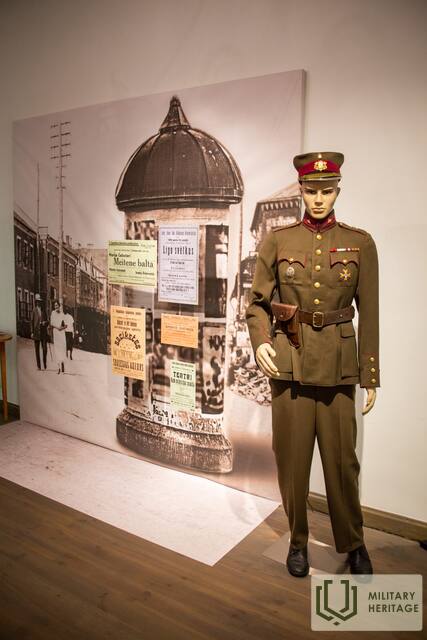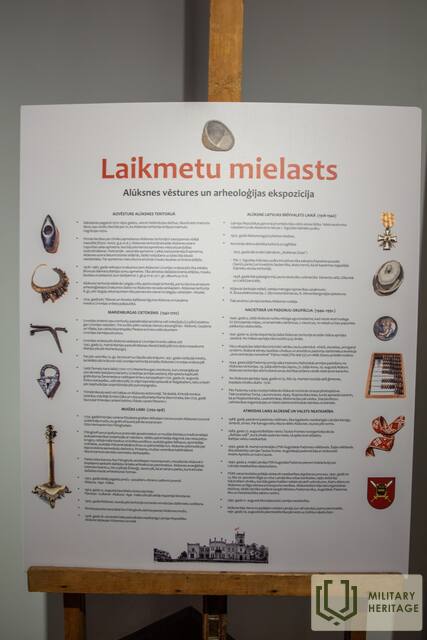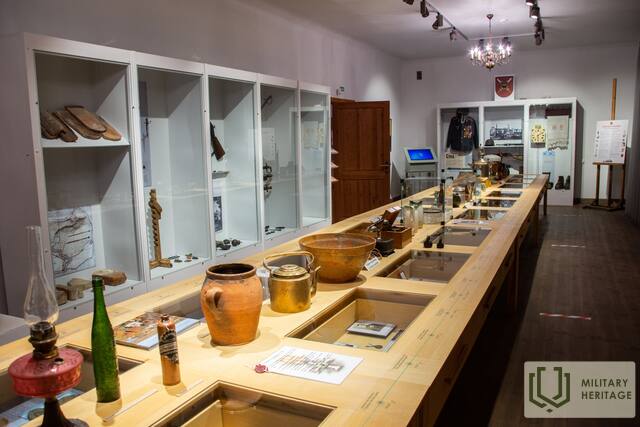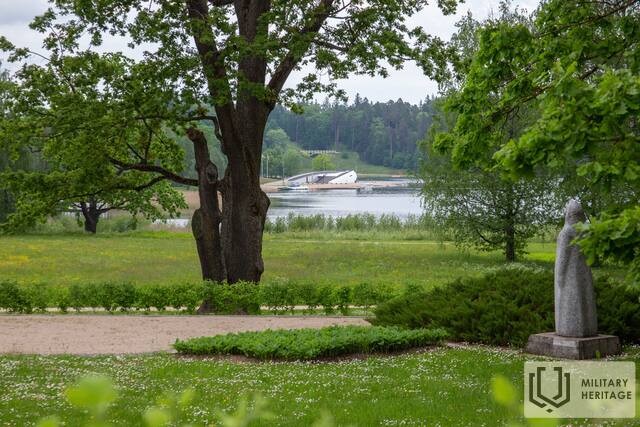Alūksne Museum Muziejus
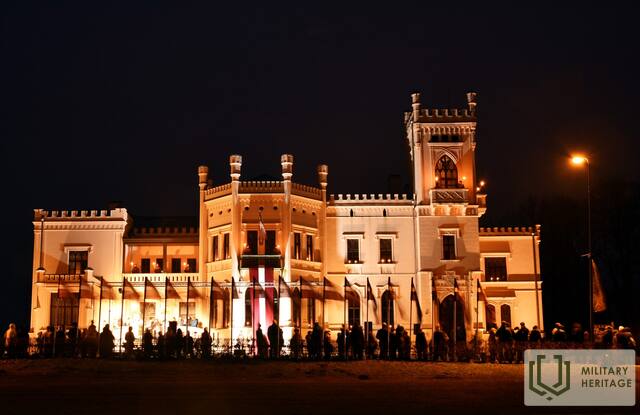

The Alūksne Museum is located in an architectural monument of national significance: the neo-Gothic Alūksne New Castle built in the late 19th century. The museum features an exhibition named ‘Memorial Room for Victims of the Totalitarian Regime’, which tells about the fate of the inhabitants of Alūksne municipality in Siberia and the Far East, while the time periods from prehistory to the present meet in the Alūksne history exhibit ‘Feast of the Ages’. It features a separate section devoted to the contribution of the 7th Sigulda Infantry Regiment to the military, culture and public life. The formation of the 7th Sigulda Infantry Regiment began on 20 June 1919 in the Naukšēni Manor. Initially, a battle group of 22 officers and 1,580 soldiers was formed from the reserve battalion of the Northern Latvian Brigade, and was named the Dankers Division. It was included in the 2nd Battalion of the 3rd Jelgava Regiment. On 23 August, following an increase in the number of companies, it became part of the 7th Sigulda Infantry Regiment. Having taken part in the battles against Bermondt, on 5 January 1920, the regiment was transferred to the Latgale front to fight the Bolsheviks. After the signing of the Peace Treaty with Soviet Russia, the regiment guarded Latvia’s eastern border. The Latvian War of Independence saw the deaths of more than 200 soldiers of the regiment, while 85 were awarded the Lāčplēsis War Order. In 1921, the 7th Sigulda Infantry Regiment was stationed in Alūksne. The regiment’s headquarters were set up in the Alūksne New Castle. After World War II, the castle was taken over by Soviet security institutions. As of the late 1950s, the castle housed various cultural institutions: the Culture and Cinematography Department of the Executive Committee, a pioneer house, a library, a cinema and a museum.
Panaudoti šaltiniai ir literatūra:
Aluksne Tourism Information Center
Edukacinės programos
Karinis paveldas Alūksnės krašto muziejuje
Alūksnės Naujojoje pilyje, kurioje kadaise buvo 7-asis Siguldos pėstininkų pulkas, dabar įsikūręs Alūksnės krašto muziejus, kuriame mokiniai parodose „Totalitarinio režimo aukų atminimo kambarys“, pasakojančiose apie Alūksnės krašto gyventojų likimus Sibire ir Tolimuosiuose Rytuose, sužinos apie Alūksnės istoriją ir kariuomenės vaidmenį jos augime, o Alūksnės istorijos parodoje „Amžių puota“ bus įdomu sužinoti, kaip susikerta laikotarpiai nuo priešistorės iki šių dienų. Atskiras skyrius skirtas 7-ojo Siguldos pėstininkų pulko indėliui į karinį, kultūrinį ir visuomeninį gyvenimą.
Teatro-edukacinis spektaklis su dalyvavimu „Penkios likimo istorijos“
Programa skatina mokinių supratimą apie sovietų valdžios vykdytus trėmimus, latvių gyvenimą tremtyje, pabrėžiant tautinio identiteto išsaugojimą ir trėmimų pasekmes Latvijos istorijos ir kultūros raidai. Pamokos metu mokiniai susipažins su penkių skirtingų personažų, patyrusių tremties įvykius, istorijomis. Muziejaus darbuotojai vaidins tremtinių vaikų istorijas, įtraukdami mokinius į pamokas. Griežtai prižiūrint Raudonosios armijos kareiviui, dalyviai turės rasti trūkstamus fragmentus represuotųjų dienoraščiuose, naršyti rusų kalba parašytame nuosprendyje, rasti užšifruotą tekstą, perskaityti jį veidrodiniu raštu, analizuoti fotografinę medžiagą ir ieškoti atsakymų į neaiškius klausimus. Deportacijų tragediją dar labiau sustiprino nepatogios darbo sąlygos, medžiagų trūkumas ir prieštaringi, besąlyginiai reikalavimai, už kurių nevykdymą deportacijų metu buvo baudžiama. Programos metu studentai mokosi įžvelgti, atrasti ir analizuoti priežastinius ryšius istoriniuose procesuose ir juos panaudoti socialiniams procesams paaiškinti. Ištirkite deportacijų metu įvykusius pokyčius ir padarykite išvadą, kaip jie susiję su politine padėtimi Latvijoje ir pasaulyje. Analizuoja veiksnius, darančius įtaką pokyčiams. Išmokite bendradarbiauti su bendraamžiais ir naudotis įvairiais informacijos šaltiniais. Programos metu studentai mokosi atpažinti ir siūlyti sprendimus situacijose, kai kyla grėsmė žmonių fiziniam ir emociniam saugumui, bei aptarti moralinius ir etinius gyvenimo vertės aspektus. Mokomasi įgūdžių demonstruoti elgesį, kuris išreiškia pagarbą ir asmeninę atsakomybę už savo ir kitų saugumą bei gerovę dviprasmiškose situacijose. Programos trukmė – 60 minučių. Tai taip pat galima rengti mokyklinių ekskursijų metu.
Susijusi laiko juosta
Susijusios temos
Susijusi istorija
7-oji Siguldos pėstininkų pulko bermontiada, Didžiosios kunigaikštienės Valijos Veščūnos apdovanojimas Lāčplės karo ordinu Alūksnėje.
Po Latvijos nepriklausomybės karo didysis seržantas Valija Veščunas 1919 m. lapkričio 19 d. už kautynes su bermontininkais prie Plėnų namų buvo apdovanotas Lāčplės karo ordinu. Valija Veščunas viena pirmųjų perėjo Lielupę priešo ugnimi.
Apie Latvijos nepriklausomybės karą ir 1918 metų įvykius Alūksnėje
1918 m., vokiečių kariuomenei įžengus į Alūksnę, latvių šaulių batalionai pasitraukė į Sovietų Rusiją. Iki 1918 m. gruodžio pradžios įsitvirtino vokiškas režimas ir buvo vykdomos pertvarkos. Vokietijai pasidavus kare, bolševikai grįžo į Alūksnę ir atkūrė savo valdžią. Suomijos savanoriai taip pat kovojo Latvijos nepriklausomybės kare kaip Estijos kariuomenės dalis. 1919 m. vasario 21 d. Alūksnėje, prie stoties, vyko įnirtingos kautynės tarp bolševikų ir suomių savanorių pulko „Šiaurės berniukai“.
7. Siguldos pėstininkų pulko formavimas
1919 m. birželio 20 d. Naukšėnų dvare, Rūjienos apylinkėse, pagal Šiaurės Latvijos brigados vado pulkininko Jorgio Zemitano įsakymą pradėtas formuoti 7-asis Siguldos pėstininkų pulkas. Iš pradžių iš Šiaurės Latvijos brigados rezervinio bataliono buvo suformuota nedidelė kovinė grupė, kurią sudarė 22 karininkai ir 1580 karių, kuri pirmojo vado Oskaro Dankerio garbei buvo pavadinta Dankerio divizija. Po kelių dienų dalinys buvo įtrauktas į 3-iojo Jelgavos pulko 2-ąjį batalioną, o rugpjūčio 23 d., papildžius kuopa, į 7-ąjį Siguldos pėstininkų pulką.




